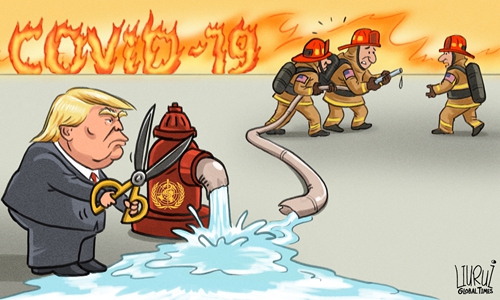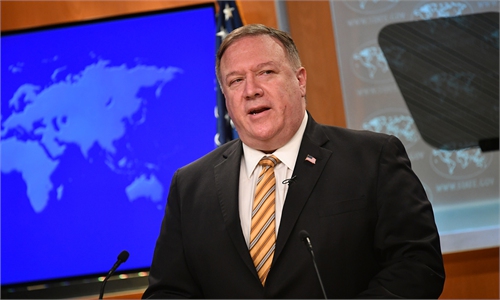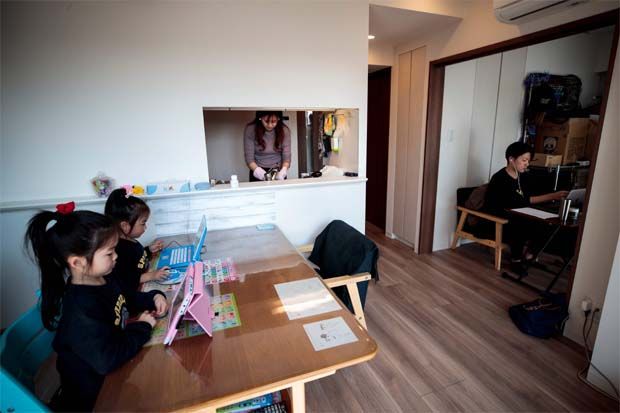IF you have been too preoccupied with all the awful stuff happening on Earth, you might have missed something that is shaping up. Up, as in up in space.
I did and it was only recently I caught up somewhat with the New Space Race. That was when I stumbled across the January graduation ceremony of the first class of 13 astronaut candidates comprising seven men and six women under the Artemis programme.
This is the long-awaited successor to the 1960s and 1970s Apollo missions by the US National Aeronautics and Space Administration (Nasa). Artemis – goddess of the moon and twin sister of Apollo – is Nasa’s plan to finally return to Earth’s closest celestial body.
The first man to land on the moon was, of course, Neil Armstrong on July 20,1969, and that historic occasion marked the winner of the first space race between the United States and Russia (or USSR as it was then called).
I still remember the excitement of watching RTM’s delayed telecast of the very grainy footage of the Apollo 11 moon landing. I was all of 10 years old.
The subsequent Apollo missions were very much part of my teenage years, but with the exception of the near disaster of Apollo 13, none of them came close to the global excitement over Apollo 11’s achievement.
That feat will be exactly 51 years old come Monday. Since Dec 14,1972, when Apollo 17 landed, no humans have visited the Moon.
While the six Moon missions did deliver much scientific data and 382kg of lunar soil samples, the race to the moon was essentially a politically-motivated contest to prove American technological prowess over Russian and once achieved, the enormously expensive one-upmanship (total cost was US$20bil) was over.
Nasa went on to do other great stuff like Skylab, the space shuttle and the International Space Station (ISS), which is still going strong after 20 years.
Without a doubt, for the last 50 years, the United States has held dominance in space exploration. But its pole position is now being challenged in the new space race.
This time it’s between the US and – no surprise – China, which also has its eye on the moon and beyond.
When China sent its first yuhangyuan (meaning “space navigator”) into orbit in the early 2000s, the West chuckled. They wondered what they would do during the flight and a think tank analyst guessed they would do some “physical exercises” and “space medicine-type things”.
No one is laughing now. In January last year, China landed its Chang’e 4 lunar lander on the far side of the moon, the first ever by any nation. (Chang’e is the Chinese moon goddess.)
From there, the Jade Rabbit 2 rover was able to transmit data back to Earth via a satellite that had been previously deployed around the moon for this purpose.
With that successful landing, China proved it has become a force to be reckoned with, which was President Xi Jinping’s declared intention in 2016 – to make China a “space giant” with the Moon as the vital centrepiece.
On May 5, China successfully launched its Long March-5B rocket, which is designed to ultimately transport astronauts into space. That was quickly followed by back-to-back launches of Earth-imaging satellites.
It might have faced a setback when its Kuaizhou-11 rocket carrying low-orbit remote sensing satellites failed to launch on July 10, but that won’t derail China’s plans to launch 60 spacecraft in over 40 launches this year.
What’s more, China plans to have its own space station in operation by the end of 2022. While Nasa partners with several other national space agencies on the International Space Station and welcomes newbie astronauts from many countries, including Malaysia, no yuhangyuan has been allowed on board.
China’s space station will orbit the moon to give it what is known as cislunar domination. Cislunar refers to the space between the earth and the moon and the moon’s orbit. If China succeeds, it will have the space equivalent of the Silk Road, because once cislunar is secured, it can develop a sustainable presence on the moon for in-space manufacturing, mineral extraction, and space-based solar power (SBSP) technology. From that, it can leap into deep space exploration and stage manned missions to Mars.
Nasa’s Artemis programme too has big plans for a permanent station orbiting the moon called the Gateway that would be instrumental to its ambition to send its first manned mission to Mars.
To do that, President Donald Trump proposed a US$4.7bil (RM20bil) budget submission for Nasa for 2021 so that Artemis can ensure “the next man and the first woman on the moon will be American astronauts (by 2024) – using this as a launching pad to ensure America is the first nation to plant its flag on Mars” by 2033.
But the Democrat-controlled Congress isn’t playing ball and wants to push the return-to-moon target date to 2028 because they don’t want it to be a Trump triumph.
This is the rare Trump initiative I actually like and how that will pan out, like his re-election, remains to be seen. But the space race is definitely on. There are other serious players, namely India and the newest – and I must say surprising – contender, the United Arab Emirates (UAE).
Russia, while maintaining a presence with its participation in the ISS, is by all accounts no longer a serious contender as its space agency Roscosmos is beset with corruption and mismanagement.
In 2014, India’s Space Research Organisation beat China in putting out a satellite in orbit around Mars, becoming the fourth national space agency to reach Mars. In the pipeline is the launch of its first crewed orbital space craft named Gaganyaan by 2022.
Today the UAE will launch its first mission to Mars: A spacecraft called Hope that will orbit the Red Planet to study its atmosphere and weather.
Undoubtedly, there are great bragging rights for a nation that has the means to undertake space exploration, truly the final frontier.
To be fair, the US has been very magnanimous in freely sharing Nasa’s inventions and innovations with the rest of the world. These include baby formula, scratch resistant lenses, artificial limbs, camera phones, athletic shoes, wireless headsets, water purification systems, the computer mouse and freeze-dried food. Just check out inventions we use every day that were actually created for space exploration on usatoday.com or bit.ly/spacethings.
I do wonder whether China will be as magnanimous?
YouTuber and former Nasa Jet Propulsion Laboratory engineer Mark Rober aptly sums up what he considers the five best reasons for space exploration in his video, “Is Nasa a waste of money?”
The one that seems the most far-fetched yet most compelling is finding habitable planets that humans can live on to prevent humanity’s extinction. Earth could be destroyed by a meteor strike or by our own human doing, a possibility which has become more real with the Covid-19 pandemic and worsening climate change.
But space exploration is no longer the sole domain of governments. Increasingly, private sector entities like Elon Musk’s SpaceX and Roger Zhang Changwu’s LandSpace have become important players and collaborators.
Still, instead of Artemis versus Chang’e, I wish the US and China can resolve their differences and work together on their space ambitions for the good of humankind instead of turning space into the latest battleground for economic and military supremacy.
I had a glimpse of the future of space exploration in 1995. That was when I visited the Johnson Space Center in Houston and saw the prototype design for the ISS.
That was in my lifetime, as was the 1969 moon landing. I may live long enough to see the first woman to walk on the Moon but perhaps not the Mars manned mission.
That saddens me but it also thrills me to know that it will happen. Bon voyage, astronauts and yuhangyuan!
The views expressed here are entirely the writer’s own.
Source link
 Read more:
Read more:
Related posts:
Live: China's inaugurates first Mars exploration mission Tianwen-1 in southern Hainan Province https://youtu.be/V9BsqPqqQbg Mi.
I did and it was only recently I caught up somewhat with the New Space Race. That was when I stumbled across the January graduation ceremony of the first class of 13 astronaut candidates comprising seven men and six women under the Artemis programme.
This is the long-awaited successor to the 1960s and 1970s Apollo missions by the US National Aeronautics and Space Administration (Nasa). Artemis – goddess of the moon and twin sister of Apollo – is Nasa’s plan to finally return to Earth’s closest celestial body.
The first man to land on the moon was, of course, Neil Armstrong on July 20,1969, and that historic occasion marked the winner of the first space race between the United States and Russia (or USSR as it was then called).
I still remember the excitement of watching RTM’s delayed telecast of the very grainy footage of the Apollo 11 moon landing. I was all of 10 years old.
The subsequent Apollo missions were very much part of my teenage years, but with the exception of the near disaster of Apollo 13, none of them came close to the global excitement over Apollo 11’s achievement.
That feat will be exactly 51 years old come Monday. Since Dec 14,1972, when Apollo 17 landed, no humans have visited the Moon.
While the six Moon missions did deliver much scientific data and 382kg of lunar soil samples, the race to the moon was essentially a politically-motivated contest to prove American technological prowess over Russian and once achieved, the enormously expensive one-upmanship (total cost was US$20bil) was over.
Nasa went on to do other great stuff like Skylab, the space shuttle and the International Space Station (ISS), which is still going strong after 20 years.
Without a doubt, for the last 50 years, the United States has held dominance in space exploration. But its pole position is now being challenged in the new space race.
This time it’s between the US and – no surprise – China, which also has its eye on the moon and beyond.
When China sent its first yuhangyuan (meaning “space navigator”) into orbit in the early 2000s, the West chuckled. They wondered what they would do during the flight and a think tank analyst guessed they would do some “physical exercises” and “space medicine-type things”.
No one is laughing now. In January last year, China landed its Chang’e 4 lunar lander on the far side of the moon, the first ever by any nation. (Chang’e is the Chinese moon goddess.)
From there, the Jade Rabbit 2 rover was able to transmit data back to Earth via a satellite that had been previously deployed around the moon for this purpose.
With that successful landing, China proved it has become a force to be reckoned with, which was President Xi Jinping’s declared intention in 2016 – to make China a “space giant” with the Moon as the vital centrepiece.
On May 5, China successfully launched its Long March-5B rocket, which is designed to ultimately transport astronauts into space. That was quickly followed by back-to-back launches of Earth-imaging satellites.
It might have faced a setback when its Kuaizhou-11 rocket carrying low-orbit remote sensing satellites failed to launch on July 10, but that won’t derail China’s plans to launch 60 spacecraft in over 40 launches this year.
What’s more, China plans to have its own space station in operation by the end of 2022. While Nasa partners with several other national space agencies on the International Space Station and welcomes newbie astronauts from many countries, including Malaysia, no yuhangyuan has been allowed on board.
China’s space station will orbit the moon to give it what is known as cislunar domination. Cislunar refers to the space between the earth and the moon and the moon’s orbit. If China succeeds, it will have the space equivalent of the Silk Road, because once cislunar is secured, it can develop a sustainable presence on the moon for in-space manufacturing, mineral extraction, and space-based solar power (SBSP) technology. From that, it can leap into deep space exploration and stage manned missions to Mars.
Nasa’s Artemis programme too has big plans for a permanent station orbiting the moon called the Gateway that would be instrumental to its ambition to send its first manned mission to Mars.
To do that, President Donald Trump proposed a US$4.7bil (RM20bil) budget submission for Nasa for 2021 so that Artemis can ensure “the next man and the first woman on the moon will be American astronauts (by 2024) – using this as a launching pad to ensure America is the first nation to plant its flag on Mars” by 2033.
But the Democrat-controlled Congress isn’t playing ball and wants to push the return-to-moon target date to 2028 because they don’t want it to be a Trump triumph.
This is the rare Trump initiative I actually like and how that will pan out, like his re-election, remains to be seen. But the space race is definitely on. There are other serious players, namely India and the newest – and I must say surprising – contender, the United Arab Emirates (UAE).
Russia, while maintaining a presence with its participation in the ISS, is by all accounts no longer a serious contender as its space agency Roscosmos is beset with corruption and mismanagement.
In 2014, India’s Space Research Organisation beat China in putting out a satellite in orbit around Mars, becoming the fourth national space agency to reach Mars. In the pipeline is the launch of its first crewed orbital space craft named Gaganyaan by 2022.
Today the UAE will launch its first mission to Mars: A spacecraft called Hope that will orbit the Red Planet to study its atmosphere and weather.
Undoubtedly, there are great bragging rights for a nation that has the means to undertake space exploration, truly the final frontier.
To be fair, the US has been very magnanimous in freely sharing Nasa’s inventions and innovations with the rest of the world. These include baby formula, scratch resistant lenses, artificial limbs, camera phones, athletic shoes, wireless headsets, water purification systems, the computer mouse and freeze-dried food. Just check out inventions we use every day that were actually created for space exploration on usatoday.com or bit.ly/spacethings.
I do wonder whether China will be as magnanimous?
YouTuber and former Nasa Jet Propulsion Laboratory engineer Mark Rober aptly sums up what he considers the five best reasons for space exploration in his video, “Is Nasa a waste of money?”
The one that seems the most far-fetched yet most compelling is finding habitable planets that humans can live on to prevent humanity’s extinction. Earth could be destroyed by a meteor strike or by our own human doing, a possibility which has become more real with the Covid-19 pandemic and worsening climate change.
But space exploration is no longer the sole domain of governments. Increasingly, private sector entities like Elon Musk’s SpaceX and Roger Zhang Changwu’s LandSpace have become important players and collaborators.
Still, instead of Artemis versus Chang’e, I wish the US and China can resolve their differences and work together on their space ambitions for the good of humankind instead of turning space into the latest battleground for economic and military supremacy.
I had a glimpse of the future of space exploration in 1995. That was when I visited the Johnson Space Center in Houston and saw the prototype design for the ISS.
That was in my lifetime, as was the 1969 moon landing. I may live long enough to see the first woman to walk on the Moon but perhaps not the Mars manned mission.
That saddens me but it also thrills me to know that it will happen. Bon voyage, astronauts and yuhangyuan!
The views expressed here are entirely the writer’s own.
Source link
 Read more:
Read more:Related posts:
Live: China's inaugurates first Mars exploration mission Tianwen-1 in southern Hainan Province https://youtu.be/V9BsqPqqQbg Mi.





























